Modern Philippine craft designs often blend traditional materials with innovative techniques. Abaca and bamboo are commonly used in these designs. For instance, Inabel textiles feature intricate geometric patterns woven into durable fabrics. Additionally, Capiz shells are transformed into modern lighting fixtures, showcasing the versatility of traditional materials.
Sustainable practices are a core aspect of modern Philippine crafts. Coconut shell craftsmanship and eco-friendly production methods are widely used. These methods not only reduce waste but also promote environmentally friendly practices.
Regional specialties contribute to the diversity of modern Philippine craft designs. For example, Cebu is known for its shellwork, while Paete is famous for its woodcarving. These regional specialties reflect the country's rich cultural heritage.
Modern Philippine crafts are easily accessible through online and offline markets. However, the story behind these evolving crafts is complex and multifaceted, reflecting the country's history and cultural traditions.
Traditional Filipino Materials
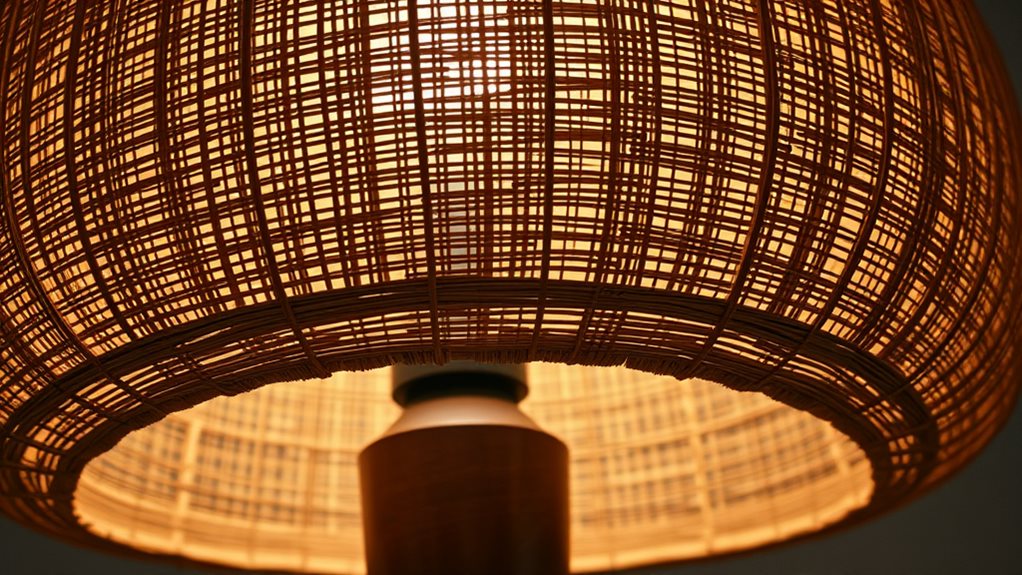
Traditional Filipino Materials
Filipino artisans rely on various traditional materials to create the country's rich craft heritage. The strong abaca fiber is woven into textiles, bags, and mats, showcasing its versatility. Bamboo, known for its durability, is ideal for furniture and handicrafts. Rattan, abundant in mountainous regions, lends itself to intricate furniture designs.
Luxurious and Local Fibers
Two local fibers contribute significantly to the country's craft heritage. Piña, a luxurious fiber from pineapple leaves, creates elegant textiles, demonstrating the resourcefulness of Filipino artisans. Buri, another local fiber, contributes to a wide range of handicrafts and textiles.
Sustainable Sourcing and Preservation
Historically, sustainable sourcing practices have been vital in the acquisition of these materials. Traditional fiber preservation techniques, passed down through generations, guarantee the longevity and quality of the crafts produced.
For example, intricate work with Capiz shells creates stunning lampshades and decorative items. Coconut shells are repurposed into home décor and furniture, highlighting resourceful use of readily available materials.
Natural Elements in Crafts
Various natural elements are used in Filipino crafts. Palm leaves are ingeniously woven into salakots, showcasing traditional headgear designs. Agsam fern adds unique textures to accessories, often combined with other natural elements.
Nipa, traditionally used for roofing, demonstrates the seamless integration of building materials with the environment.
Woodworking and Furniture-Making
Durable wood species like narra, acacia, molave, mahogany, and yakal are skillfully used in woodworking and furniture-making. These woods contribute to the longevity and aesthetic appeal of Filipino furniture.
Natural Dyes and Adornments
Plant-based, animal-derived, and mineral dyes add vibrant colors and symbolic meanings to textiles. Tortoiseshell and gems, once used on salakots, reflected social status and the use of natural adornments to enhance craft aesthetics.
Feathers and beads added further embellishments, also signifying wealth and class.
Modern Craft Techniques
Philippine Craft Techniques Combine Tradition and Innovation****
Philippine craft techniques have evolved to blend age-old traditions with contemporary innovations. Traditional weaving, such as Inabel and Malong, now incorporates modern designs while preserving ancient methods. For instance, these textiles have retained their cultural significance while reflecting contemporary tastes.
Similarly, traditional metalworking techniques like filigree, repoussé, and blacksmithing have been adapted with modern aesthetics.
Incorporating New Materials and Techniques
Innovative materials and techniques have become prevalent in Philippine crafts. The use of new materials, such as sea grass with bamboo, has given rise to new products like baskets made from stained rattan splits.
Additionally, lacquer is being used to enhance traditional materials like buri and rattan. Modern woodworking tools and methods have also been incorporated while maintaining traditional craftsmanship. Furthermore, computerized embroidery methods are now supplementing handmade techniques.
Preserving Traditional Skills and Techniques
Training and skill development programs are essential for preserving traditional skills and techniques. Various initiatives, such as embroidery artisan training, woodworking apprenticeships, pottery skill development initiatives, and metalwork heritage projects, are being implemented.
These programs focus on preserving cultural heritage and ensuring sustainable practices for future generations. Cultural heritage workshops also play a crucial role in educating and preserving this legacy.
Contemporary Artistic Expression in Philippine Crafts
Contemporary artistic expression in Philippine crafts is flourishing. Traditional patterns are being reimagined in contemporary textile art, and traditional batik is being adapted with distinct Filipino patterns.
Local styles are also being incorporated into street art, and modern furniture design is using traditional materials. Moreover, traditional embroidery techniques are being employed in modern fashion, and digital marketing is helping to showcase Filipino craftsmanship globally.
Regional Craft Specialties
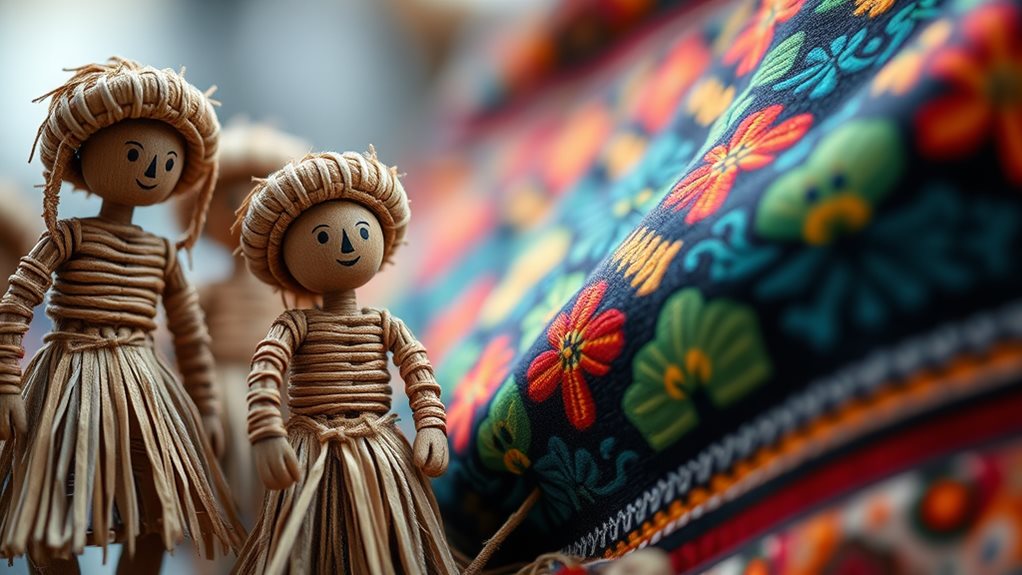
The Philippines is home to diverse regional craft specialties that showcase unique traditions and resources. Cebu's shellwork is a prominent example, transforming mother-of-pearl into exquisite jewelry and furniture. This region is also known for its bkat baskets, which feature intricate hexagonal lattice patterns.
The Ilocos Region is famous for its Inabel textiles, which display traditional handwoven patterns on durable fabrics used for clothing and home décor. These textiles are characterized by rich, earthy tones and intricate designs. Moreover, Inabel textiles are created using sustainable practices, contributing to the country's rich cultural heritage.
In Bicol, Abaca baskets are skillfully crafted from abaca fibers, often showcasing modern minimalist designs**. The Abaca fiber used in these baskets is notable for its smooth, strong texture and subtle sheen**. This craft demonstrates the skillful use of natural resources in Abaca weaving.
Mindanao's rich heritage is evident in its colorful malongs, versatile tubular fabrics used as clothing and more. These malongs are distinguished by bold, vibrant colors and geometric patterns.
Paete woodcarving in Laguna is another notable regional specialty, demonstrating intricate craftsmanship in producing religious icons and decorative pieces.
The Philippines' regional craft specialties highlight the country's rich cultural heritage, showcasing both traditional techniques and modern innovations. Each region's unique resources and artistic styles contribute to a diverse and dynamic national craft tradition.
Online and Offline Markets
Filipino crafts are marketed and offered through a combination of online and offline channels.
Online platforms play a significant role in promoting Filipino crafts. Filipino artisans can be found on Etsy and various digital marketplaces, where they showcase traditional techniques with modern aesthetics. Social media platforms, such as Facebook and Instagram, serve as essential tools for promotion and direct sales.
Dedicated online stores like Kultura Filipino offer curated collections that cater to a global market, influencing trends and increasing international visibility.
Offline markets also remain crucial for the sale of Filipino crafts. Local markets, such as Quiapo in Manila and the Legazpi Sunday market, offer a platform for artisans to showcase traditional crafts. Specialized shops, including luxury brands like Jewelmer, provide high-end, exclusive items.
Craft fairs and festivals are also held regularly, featuring both traditional and contemporary designs that attract domestic and international buyers. Towns like Paete and Lumban, known for woodcarving and embroidery, respectively, have thriving local markets that cater to local consumers.
The combination of online and offline channels contributes to the current market trends, ensuring the continued growth of Filipino craftsmanship.
Cultural Significance of Crafts
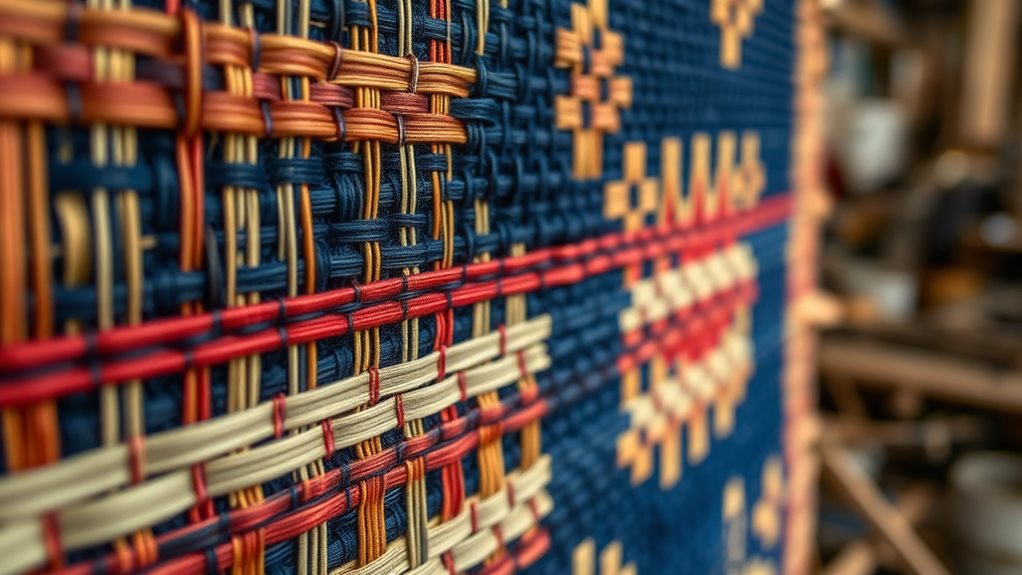
Filipino crafts are deeply rooted in the country's cultural identity and heritage****. They hold significant meaning, extending beyond their practical uses. These crafts are powerful expressions of the Filipino people's history and traditions, connecting the past to the present.
Each craft tells a unique story through its intricate details and symbolism. For example, the vibrant colors of a Maranao malong reflect the wearer's social status and cultural affiliation. The precise woodcarvings from Paete, Laguna, showcase the community's skill and artistry. The rhythmic motion of a weaver's hands creating Inabel textiles illustrates the importance of traditional techniques. The spirit-infused patterns of T'nalak fabrics demonstrate the Blaan people's connection to their ancestors.
Traditional crafts play a significant role in Filipino daily life and celebrations. The meticulous weaving techniques used in these crafts reflect generations of knowledge passed down through the years. The choice of natural materials, such as bamboo, abaca, and capiz shells, demonstrates a sustainable relationship with the environment. Traditional crafts are also integrated into clothing and home decor, highlighting their ongoing relevance in modern Filipino society.
Preserving traditional crafts is essential for maintaining the country's cultural heritage. The continued production of these crafts ensures that traditional skills and knowledge remain alive.
Supporting local artisans directly contributes to craft preservation and empowers communities to share their unique cultural legacy**. Contemporary artists are adapting traditional techniques, creating modern interpretations while upholding the spirit of these ancestral practices. This fusion of tradition and innovation is crucial for safeguarding cultural identity and securing the future of Filipino crafts**.
Storytelling Through Designs
Philippine Crafts: A Blend of Functionality and Cultural Storytelling
Philippine crafts are more than just functional items; they carry vibrant narratives and deep cultural symbolism. Each piece of art is a reflection of the Philippines' rich history and traditions.
Design Symbolism and Cultural Storytelling
Design symbolism plays a crucial role in Philippine crafts. Each pattern, shape, and material choice carries meaning. For instance, Inabel weaving features intricate patterns that reflect Filipino heritage. The T'nalak cloth, on the other hand, boasts dream-inspired designs that showcase the T'boli people's connection to the spiritual world.
Examples of Philippine Crafts
| Craft | Material | Design Symbolism | Cultural Storytelling | Significance |
|---|---|---|---|---|
| T'nalak Cloth | Abaca | Dream-inspired patterns reflect the T'boli people's spiritual connection | T'boli spiritual beliefs | Connection to the spirit world |
| Inabel Weaving | Cotton | Intricate patterns preserve Filipino heritage | Filipino heritage | Preservation of tradition |
| Malong | Cotton, silk | Vibrant colors and geometric designs represent Maranao identity | Maranao cultural identity | Social and ceremonial use |
| Banig | Pandan leaves | Intricate weaving patterns signify Visayan traditions | Visayan traditions | Daily life and gifting |
| Abaca Fiber Crafts | Abaca | Functional forms and natural beauty showcase resourcefulness | Resourcefulness | Sustainability and utility |
Sustainable Crafts and Traditional Techniques
The use of natural materials like bamboo, capiz shells, and pandan leaves in Philippine crafts reflects a deep understanding and respect for the environment. This approach results in unique and sustainable crafts. Paete woodcarving, for example, combines indigenous artistry with Spanish colonial influences to create powerful narratives that speak of faith and artistic prowess.
The Fusion of Traditional and Contemporary Techniques
The fusion of traditional and contemporary techniques creates new narratives in Philippine crafts. This dynamic interplay between cultural storytelling and design symbolism is evident in the blending of ancient skills with modern aesthetics. By combining traditional techniques with modern styles, Filipino artists create innovative and meaningful crafts that celebrate cultural heritage.
Contemporary Uses of Crafts
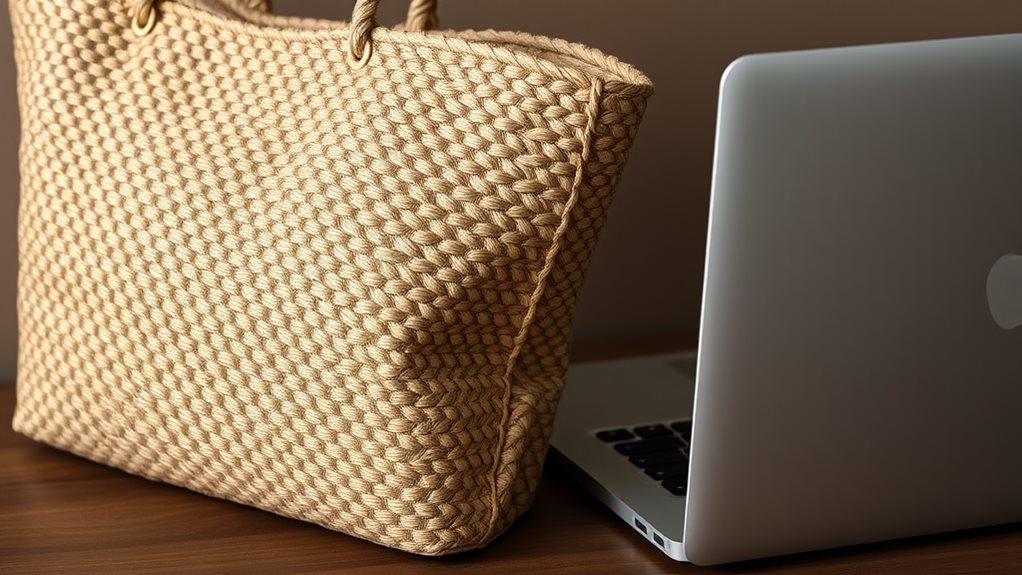
Traditional Philippine crafts have adapted to modern settings while retaining their cultural significance**. Artists like Lenore RS Lim incorporate traditional weaving techniques into contemporary textile art, reimagining patterns for modern designs. This fusion is seen in Inabel and Malong textiles**, now used in modern clothing, blankets, and home decor, showcasing their versatility.
Materials from traditional crafts have found new uses in contemporary design. Capiz shells are used in modern lamps and jewelry, while mother of pearl adds elegance to kitchenware. Abaca fiber is now used in lamps and baskets, and woodcarving continues, often combining Narra or Acacia wood with other materials.
The fusion of traditional and contemporary design is evident in various crafts. Agsam Fern weaving incorporates pearls and metalwork into traditional techniques, while fashion designers like Lenora Cabili blend ancient embroidery with modern aesthetics. The result is visually striking, with vibrant colors and intricate details.
Examples of this integration include T'nalak-inspired dresses, Capiz shell lampshades, abaca fiber baskets, and wood carvings incorporating shells and stones. These crafts not only showcase aesthetic appeal but also contribute to craft sustainability and the economic well-being of Filipino artisans.
Craft sustainability is supported by brands like Jewelmer, which utilize South Sea pearls to create high-value products while supporting local communities. Online platforms and local markets provide access to these contemporary crafts, fostering growth and international reach.
As a result, a thriving, dynamic landscape has emerged, where tradition and modernity coexist****.
Bamboo's Modern Applications
Bamboo is a versatile and sustainable material with numerous modern applications. Bamboo architecture is one such application, where treated bamboo poles and panels meet construction-grade standards, replacing traditional materials. This is particularly evident in affordable housing projects that collaborate with organizations dedicated to sustainable building practices.
For instance, structures engineered for durability and mold resistance are suitable for humid climates.
In addition to construction, bamboo is widely used in furniture and home décor items. Its breathability and moisture-absorption properties make it ideal for tropical environments.
Solid bamboo flooring is another notable application, offering superior resistance to water damage and warping compared to hardwood. Furthermore, bamboo is used in cladding, decking, and veneer, with refinishing involving sanding and applying a new finish.
Bamboo's innovative applications extend to the textile industry, where bamboo textiles create breathable clothing and accessories. It's also used in paper production as a sustainable alternative to traditional methods.
Moreover, bamboo is found in everyday items like lightweight, durable smartphone cases. DIY bamboo dome kits, grill caddies, and bicycles showcase its adaptability.
The environmental appeal of bamboo lies in its rapid growth cycle and low carbon footprint.
Bamboo's natural pest-resistant properties**** further enhance its sustainability. As a renewable resource, bamboo is an essential element in creating a greener future, driving further innovation in its use and cultivation.
Rattan in Modern Designs
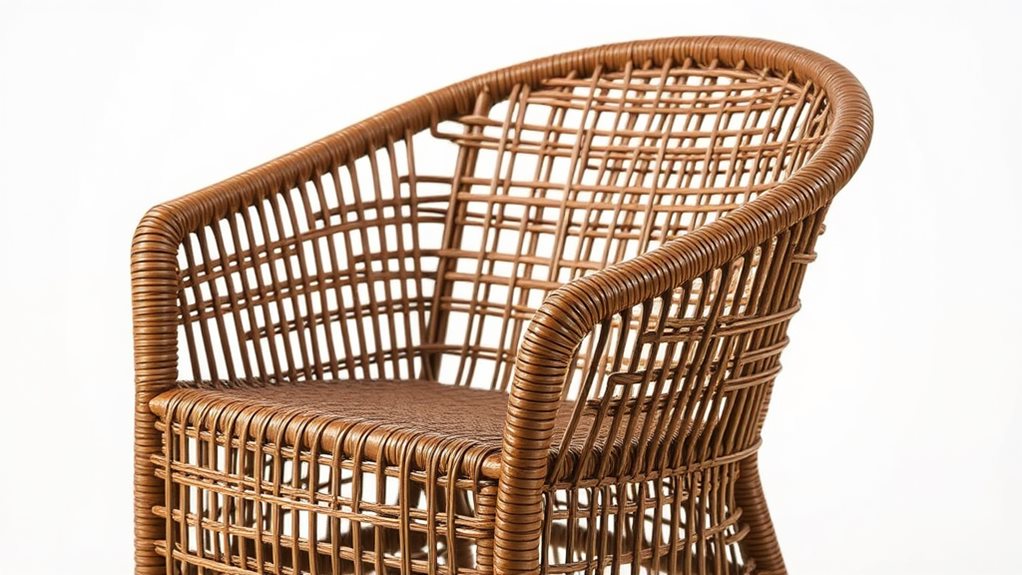
Rattan is a unique material that combines traditional craftsmanship and modern aesthetics in its use in modern design. Skilled artisans employ age-old weaving techniques, resulting in intricate and unique designs. This approach reflects a commitment to sustainable practices, as rattan's durability minimizes waste, and ethical sourcing guarantees fair compensation for workers.
Rattan's natural golden hue and versatility contribute to its widespread appeal. The material's adaptability allows for incorporation into diverse styles, from minimalist to elaborate. Examples of rattan designs include handcrafted chairs with elegantly curved backs, intricately woven screens, stylish lamps, and durable outdoor furniture.
Rattan's durability is a key factor in its enduring popularity. Its inherent strength and flexibility contribute to the creation of long-lasting furniture pieces**. Additionally, its inherent lightness makes it easy to work with, allowing for intricate detailing**.
The global appreciation for Filipino rattan demonstrates the country's rich craft tradition. Rattan furniture can be found in various settings, from high-end hotels to modern urban homes.
The fusion of traditional skills and contemporary design has solidified rattan's position as a leading material in modern design. The versatility and sustainable nature of rattan combine to captivate a global audience.
Capiz Shell Innovations
Capiz Shell Innovations: A Diverse Range of Designs
Capiz shell craftsmanship has evolved beyond traditional applications, now incorporating various shapes and designs. Examples include pendants, chandeliers, and wall sconces. Today's capiz shell trends feature intricate designs, geometric patterns, and cascading tiers. Drum-like shapes with rectangular panels or honeycomb designs also exist, mimicking natural forms. Scalloped edges, inspired by scallop shells, create unique round or dome-shaped fixtures.
Valued Qualities and Finishes
The translucent, pearlescent quality of capiz shells is highly valued. Available finishes include natural, dyed, polished, and matte. Options range from polished to matte, influencing light diffusion. Luxurious finishes, such as gold-plating, and natural wood combinations are also available. Innovative patterns and shapes continue to emerge, adding to the versatility of this material.
Innovative Patterns and Shapes
Capiz shell designs now incorporate a variety of patterns and shapes. Examples include mosaics, petal-like designs, and bowl-shaped pendants. Textured surfaces, mimicking pinecones or scales, also exist. Inside shades may be coated with contrasting finishes, such as gold, adding an extra layer of complexity to the design.
Design Variations and Options
| Design Variation | Material & Finish Options | Innovative Patterns & Shapes |
|---|---|---|
| Cascading tiers | Natural, dyed, polished, matte | Mosaics, petal-like designs |
| Geometric patterns | Gold-plated, frosted | Bowl-shaped pendants, textured surfaces |
| Drum-like shapes | Wood combinations | Pinecone or scaled creature mimics |
| Honeycomb designs | Contrasting inner shade finishes |
Integration into Various Settings
Capiz pendant lights seamlessly integrate into contemporary and modern settings. Their sculptural designs and warm glow add sophistication. These lights can create a vintage or coastal vibe depending on the patterns and finishes. The natural shimmer of the capiz shells enhances the lighting effect in any space.
Abaca Fiber Crafts Today
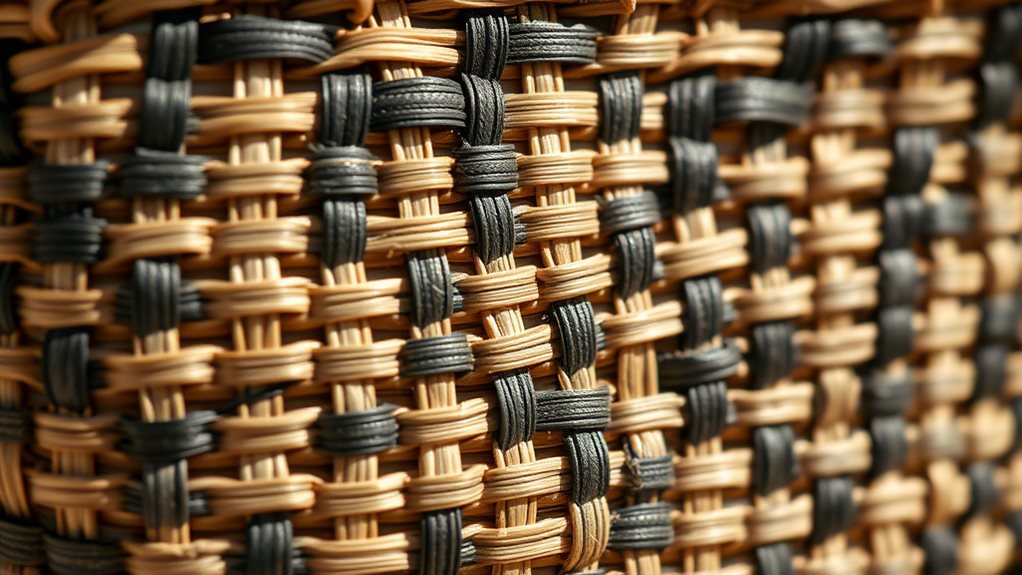
Abaca Fiber Crafts Today: A Blend of Tradition and Innovation****
Abaca fiber crafts represent a rich tapestry of tradition and innovation, reflecting the transformation of the abaca plant from its harvesting to its final woven form. The abaca plant is harvested, and its stem fibers are extracted, dried, and softened by hand. These fibers are then skillfully woven into a diverse array of products using ancient techniques and modern applications.
The Craftsmanship****
The meticulous process of creating abaca fiber products involves several steps.
The fibers are extracted from the plant's stem, dried, and softened by hand. These fibers are then woven on backstrap looms or other traditional tools into various products, such as rugs, handbags, and clothing.
Abaca Products
Abaca fiber products showcase the fiber's natural strength and versatility.
Examples include handwoven abaca rugs that warm floors, stylish abaca handbags with natural texture, and elegant abaca fashion items like flowing skirts.
Sustainability
Abaca sustainability is central to this craft.
The production methods are inherently eco-conscious, using minimal resources. By choosing abaca products, you're not only acquiring beautiful, durable items but also supporting traditional craftsmanship and fostering abaca sustainability.
Abaca's versatility extends beyond clothing to home decor, featuring prominently in rugs, wall coverings, and other items.
Coconut Shell Craftsmanship
Coconut shell craftsmanship in the Philippines is a prime example of sustainable artistry. This initiative transforms discarded coconut shells from the coconut oil industry into beautiful, functional products, minimizing environmental impact by upcycling waste. The practice supports local craftsmanship and contributes to environmentally conscious communities.
Artisan empowerment is at the heart of this craft. It preserves cultural heritage and provides income opportunities for artisans, fostering sustainable livelihoods. Local artisans collaborate, creating pieces that reflect their unique cultural identities.
Different regions in the Philippines specialize in particular designs or functional items, promoting community empowerment. For example, the town of Taal in Batangas is known for its intricate wood and shell carvings, while the island of Cebu is famous for its shell jewelry.
Coconut shells have various creative applications. Artisans transform them into tableware, serveware, jewelry, and home decor. They intricately carve designs, adding cultural and aesthetic value. The natural beauty of the shells, with their smooth surface and rich brown tones, lends itself to modern home décor.
The techniques used in coconut shell craftsmanship are fascinating. Artisans use specialized tools like knives, chisels, and sandpaper to create intricate designs, sanding to a smooth finish and sometimes adding color or paint.
This process reflects centuries of evolution, with each culture adding its own unique style.
The Future of Filipino Crafts

The future of Filipino crafts is shaped by multiple factors, including the balance between tradition and innovation, economic viability, and community engagement. A multifaceted approach is required to ensure the continued flourishing of these art forms.
To ensure sustainability, Filipino crafts must adopt responsible practices. Embracing sustainable practices, sourcing materials responsibly, and minimizing environmental impact are essential. For instance, exploring the use of recycled materials and promoting ethical production methods can make a significant difference.
Effective collaborations between artisans, designers, and businesses are crucial for the growth of Filipino crafts. These partnerships can create new markets, introduce innovative designs, and strengthen brand recognition. By working together, artisans can gain exposure to new audiences and designers can learn from traditional techniques.
Fair compensation and equitable market access for Filipino craftspeople are vital for economic sustainability. Prioritizing fair compensation and equitable market access guarantees the economic sustainability of traditional crafts, empowering artisans and communities. This can be achieved by ensuring that craftspeople receive a fair price for their work and have access to markets where they can sell their products.
Education and community engagement are essential for the preservation of traditional skills and knowledge. Integrating craft education into local communities ensures the longevity of traditional skills and knowledge. This can be achieved by supporting initiatives that nurture young talent and connect artisans with broader audiences. For example, workshops and training programs can be established to teach young people traditional crafts.
Documenting and educating future generations about the cultural significance of Filipino crafts is vital for their preservation. Learning to balance the need for economic sustainability with the preservation of traditional techniques and cultural heritage is essential for the future of Filipino crafts. By documenting traditional techniques and cultural heritage, future generations can learn from and build upon the past.
Questions and Answers
How Are Filipino Crafts Priced?
Filipino craft prices are determined by various factors. These factors include the cost of materials, the amount of labor required, and the current market demand for the item. The prices of Filipino crafts can vary widely depending on the market channel. For example, traditional items sold at local markets may be priced lower than those sold at specialty stores or online. Additionally, the complexity and brand reputation of the item also impact its price.
Where Can I Learn Traditional Techniques?
Traditional techniques can be learned through various channels. Workshops offered by cultural institutions, such as museums and historical societies, provide hands-on experience. Artisan communities, like craft guilds and folk art organizations, also offer training in traditional techniques. Additionally, online resources focused on cultural preservation, including websites and online courses, make it possible to learn these techniques remotely.
What Are the Best Craft Workshops?
The best craft workshops are those that align with your interests and values.
When searching for a meaningful experience, consider workshops that incorporate sustainable materials. For example, a woodworking workshop that uses reclaimed wood or a textile workshop that utilizes repurposed fabric.
Another important factor to consider is the community impact of the workshop. Look for workshops that provide opportunities for social interaction, skill-sharing, and collaboration among participants. This could include a ceramics workshop that partners with local artists or a jewelry-making workshop that supports local artisans.
Are There Any Craft Apprenticeships?
Craft apprenticeships are available, offering mentorship programs and hands-on training. These programs focus on building skills through practical experience with master artisans. This approach allows individuals to learn traditional techniques while working alongside experienced professionals.
How Can I Support Filipino Artisans?
Supporting Filipino artisans involves buying handcrafted goods directly from them. This approach ensures that they receive fair wages for their work. By doing so, you are helping preserve the country's cultural heritage and promoting the continuation of traditional craftsmanship.
Buying directly from artisans also allows you to appreciate the story behind each handcrafted item. For example, you might purchase a handwoven basket made from local materials, such as tikog or buri, which are native to the Philippines. By supporting the artisans who create these baskets, you are helping to keep alive the traditional weaving techniques that have been passed down through generations.
Another way to support Filipino artisans is through organizations that prioritize artisan empowerment and ethical sourcing. These organizations work to provide artisans with the resources and training they need to succeed in the market. They also ensure that artisans receive fair wages for their work and that their products are sold in a way that is respectful of their cultural heritage.